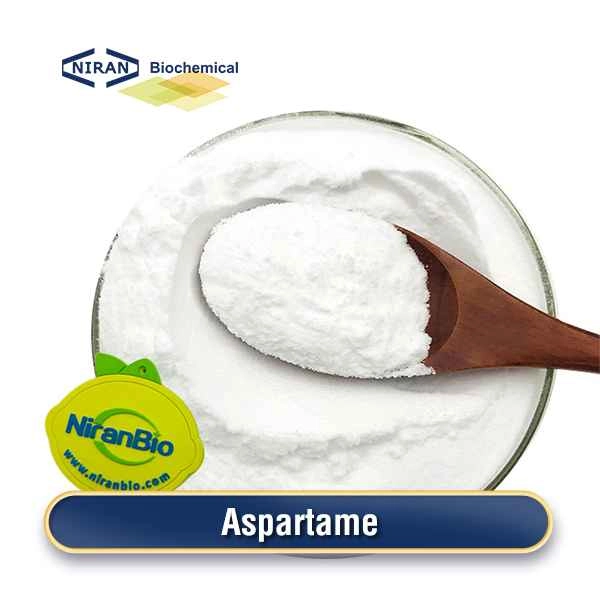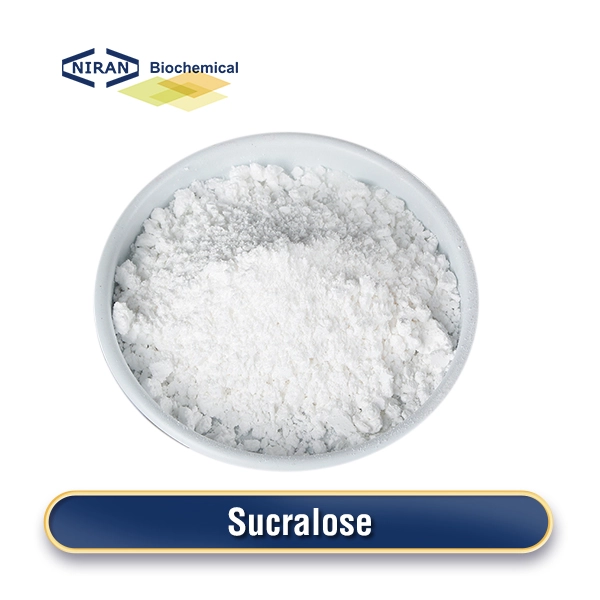Aspartame and sucralose are popular artificial sweeteners in many foods and beverages, offering sweetness without calories. Despite their similar uses, they differ in chemical composition, stability, sweetness intensity, and applications. This article explores their differences, health effects, advantages, disadvantages, and roles in various industries.

What is Aspartame?
Combining aspartic acid with phenylalanine, two amino acids, creates aspartame, an artificial sweetener. These are naturally occurring components found in many protein-rich foods, but when combined, they create a compound with a strong sweet taste. Aspartame was discovered in 1965 and is now one of the most researched food additives worldwide. It takes less of it to get the same sweetness as sucrose, or table sugar because it is around 200 times sweeter.
Characteristics:
- Sweetness Intensity: Aspartame is approximately 200 times sweeter than sugar.
- Calories: It contains 4 calories per gram, but because so little is needed, the caloric contribution is negligible.
- Stability: Aspartame breaks down at high temperatures, making it unsuitable for use in baked goods or cooking at high temperatures. It works best in goods that are room temperature or chilled.
- Aftertaste: Some users report a mild aftertaste with aspartame, although it is generally well-tolerated.

What is Sucralose?
Sucralose, in contrast, is derived from sugar through a process that substitutes three hydroxyl groups in the sugar molecule with chlorine atoms. This change makes sucralose non-caloric and about 600 times sweeter than sugar. It was discovered in 1976 and was approved for use in food products in the late 1990s. Nowadays, sucralose’s exceptional sweetness and heat durability make it a popular ingredient in many food and beverage applications.
Characteristics:
- Sweetness Intensity: About 600 times sweeter than sugar is sucrose.
- Calories: Sucralose is calorie-free, making it a preferred choice for those seeking to avoid sugar entirely.
- Stability: Sucralose can be used for baking and cooking since it is stable at high temperatures.
- Aftertaste: Sucralose generally has less of an aftertaste compared to other sweeteners, though some users report a slight metallic aftertaste in certain products.
Utilizations in the Food and Drink Sector
Foods and Drinks Containing Aspartame
Aspartame is commonly used in soft drinks, sugar-free gum, yogurt, and sugar-free candies. Its inability to withstand high temperatures means it is primarily used in products that are cold or stored at room temperature. Due to its clean taste, it is preferred in beverages where a sugar-like taste is essential.
- Soft Drinks: A frequent sweetener in diet sodas and other low-calorie beverages is aspartame. It helps mimic the sweetness of sugar without the added calories.
- Gum and Candies: Aspartame is used in sugar-free gum and candies due to its ability to deliver a sweet taste without contributing to dental decay.
- Yogurts and Dairy Products: In products like sugar-free yogurt, aspartame enhances sweetness without impacting the caloric content.
Sucralose in Food and Beverages
Sucralose is more versatile than aspartame due to its heat stability. Because of this, it is perfect for use in cooking, baking, and other processes involving high temperatures. Moreover, drinks, baked foods, dairy items, and sauces frequently include sucrose.
- Baked Goods: Sucralose’s heat stability makes it an excellent sweetener for cakes, cookies, and other baked goods. It retains its sweetness throughout the baking process.
- Condiments and Sauces: Sucralose is used in sugar-free ketchup, salad dressings, and sauces, where its ability to withstand heat and acidity is beneficial.
- Beverages: Like aspartame, sucralose is used in a variety of beverages, including diet sodas, fruit juices, and flavored waters, as it provides intense sweetness without calories.
Safety and Health Concerns
Following thorough safety reviews, regulatory bodies such as the European Food Safety Authority (EFSA) and the Food and Drug Administration (FDA) of the United States authorized aspartame and sucralose. However, concerns persist regarding their long-term health effects.
Aspartame:
- Because aspartame includes phenylalanine, those who have the uncommon hereditary condition phenylketonuria (PKU) need to avoid it.
- There is conflicting evidence connecting aspartame consumption to allergic responses and headaches in certain research.
- The acceptable daily intake (ADI), as set by regulatory organizations, is 50 mg per kilogram of body weight.
Sucralose:
-
- Though generally regarded as safe, some research raises the possibility of impacts on the gut flora and glucose metabolism.
- The ADI for sucrose is 5 mg per kilogram of body weight.
- Sucralose has been shown to remain stable during digestion, which may contribute to its safety profile.
Consumer Perceptions and Usage Trends
The popularity of artificial sweeteners like aspartame and sucralose has grown significantly as consumers become more health-conscious and seek alternatives to sugar. However, public perceptions can vary:
-
-
- Aspartame has faced criticism and scrutiny due to past controversies regarding its safety, leading some consumers to avoid it despite its widespread use in diet products.
- Sucralose tends to have a more favorable perception among consumers, partly due to its natural-sounding name and the absence of the negative publicity associated with aspartame.
-
Uses for Diabetes and Weight Management
People who take sucralose or aspartame often do so in an effort to lower their blood sugar levels or lose weight.
-
-
- Aspartame gives sweet flavors without the calorie count of sugar and is frequently used in low-calorie and sugar-free goods. However, some individuals with diabetes may need to monitor their intake due to potential effects on insulin sensitivity.
- Sucralose is commonly used in products marketed to people with diabetes. Because of its high sweetness intensity, which requires less to obtain the required sweetness, it is a desirable choice for people watching their carbohydrate consumption.
-
Choosing Between Aspartame and Sucralose
When deciding between aspartame and sucralose, several factors should be considered:
-
-
- Taste Preference: Individuals may prefer one sweetener over the other based on taste and aftertaste experiences.
- Usage in Cooking/Baking: Sucralose’s heat stability makes it a better choice for baking, while aspartame is suitable for cold applications.
- Health Concerns: Consumers should consider their individual health needs, particularly those with PKU who must avoid aspartame.
- Dietary Goals: Both sweeteners can help reduce caloric intake, but consumers should remain mindful of their overall diet quality.
-
Conclusion
When deciding between these two sweeteners, consumers should take their dietary limitations, taste preferences, and health requirements into account. Ongoing research will continue to shed light on their long-term effects and safety profiles, ensuring that they remain viable options in the ever-evolving landscape of food and beverage formulation.
